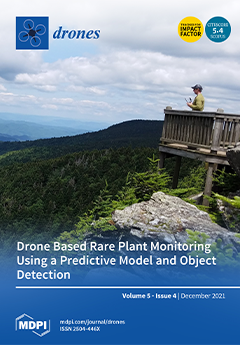Unmanned aerial vehicles (UAV) enable detailed historical preservation of large-scale infrastructure and contribute to cultural heritage preservation, improved maintenance, public relations, and development planning. Aerial and terrestrial photo data coupled with high accuracy GPS create hyper-realistic mesh and texture models, high resolution point
[...] Read more.
Unmanned aerial vehicles (UAV) enable detailed historical preservation of large-scale infrastructure and contribute to cultural heritage preservation, improved maintenance, public relations, and development planning. Aerial and terrestrial photo data coupled with high accuracy GPS create hyper-realistic mesh and texture models, high resolution point clouds, orthophotos, and digital elevation models (DEMs) that preserve a snapshot of history. A case study is presented of the development of a hyper-realistic 3D model that spans the complex
km
area of the Brigham Young University campus in Provo, Utah, USA and includes over 75 significant structures. The model leverages photos obtained during the historic COVID-19 pandemic during a mandatory and rare campus closure and details a large scale modeling workflow and best practice data acquisition and processing techniques. The model utilizes 80,384 images and high accuracy GPS surveying points to create a
trillion-pixel textured structure-from-motion (SfM) model with an average ground sampling distance (GSD) near structures of
cm and maximum of
cm. Separate model segments (31) taken from data gathered between April and August 2020 are combined into one cohesive final model with an average absolute error of
cm and a full model absolute error of <1 cm (relative accuracies from
cm to
cm). Optimized and automated UAV techniques complement the data acquisition of the large-scale model, and opportunities are explored to archive as-is building and campus information to enable historical building preservation, facility maintenance, campus planning, public outreach, 3D-printed miniatures, and the possibility of education through virtual reality (VR) and augmented reality (AR) tours.
Full article





